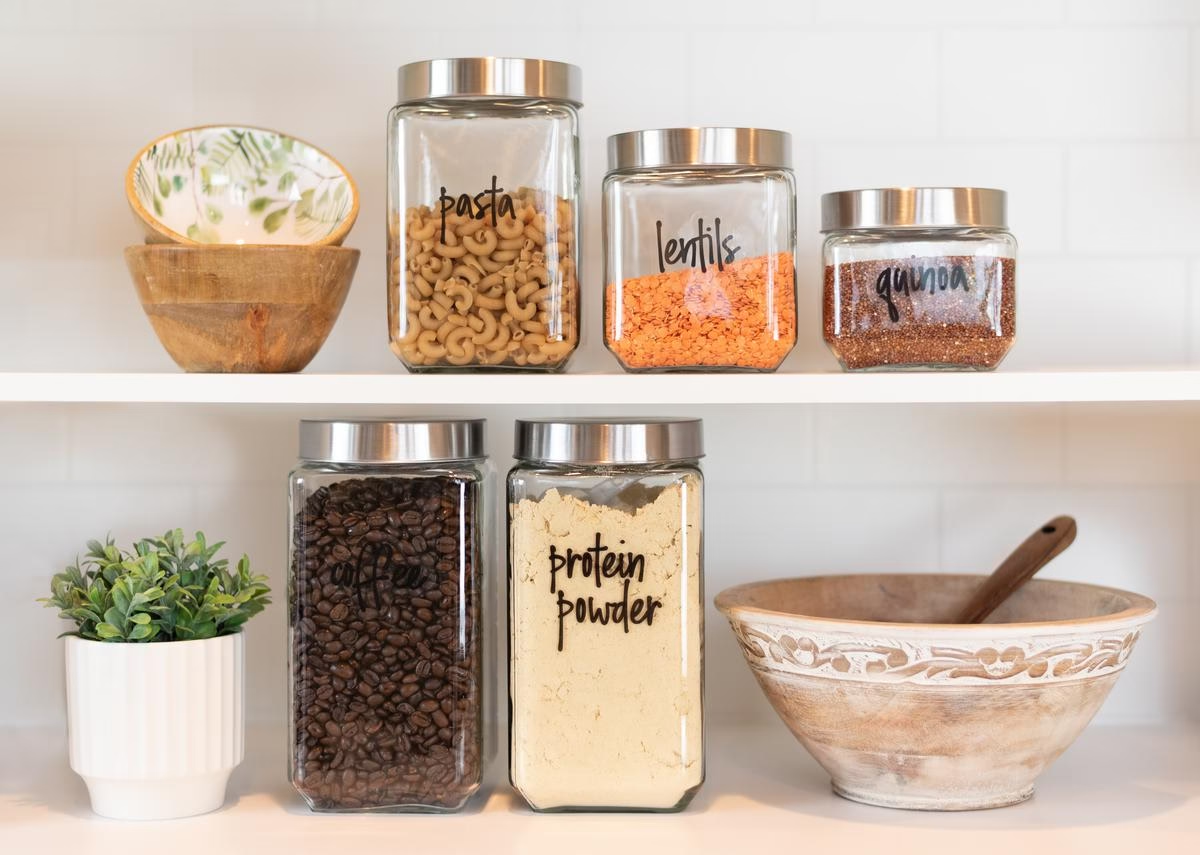For years, my kitchen cupboard was a zone of chaos. A messy jumble of unga, half-empty bags of spices, and tins of beans stacked precariously on top of each other. Trying to find that one specific ingredient felt like a mission, often ending in a mini-avalanche of cans and packets. I was constantly buying things I already had and letting other things go past their expiry date, simply because I couldn’t see what was there.
Then, I finally decided to organize my space. I realized that a well-organized pantry isn’t about expensive containers or fancy labels—it’s about having a system that makes sense for the way we cook in Kenya. I want to share my personal approach to pantry categories, based on the staple foods and cooking habits of a typical Kenyan household, to help you create a more efficient and enjoyable kitchen.
Why Categorizing Your Pantry is a Game-Changer
Organizing my pantry into specific categories was a revelation. It saved me time and money, and reduced my food waste.
- Saves Time: No more frantic searching for a specific spice or flour.
- Reduces Waste: I can clearly see what I have, which helps me use up ingredients before they expire.
- Saves Money: I’ve stopped buying duplicates of items I already own.
- Stress-Free Cooking: Meal prep becomes a joy when everything is in its place.
Read: A Comprehensive Guide to Organizing Your Kitchen Pantry in Kenya.
My Essential Pantry Categories for a Kenyan Kitchen
Here are the categories that I’ve found work best for me, based on the ingredients I use most often.
1. The Carb Corner: Grains and Starches
This is the foundation of a Kenyan kitchen. I dedicate a shelf to these staples because they are the basis for so many meals. I’ve invested in clear, airtight containers for these to keep them fresh and free from pests.
- Unga (Maize Flour): For making ugali. I keep a large, easily accessible container.
- Rice: Both regular and pishori for our pilau.
- Wheat Flour: For chapati, mandazi, and baking.
- Pasta and Noodles: Quick-meal essentials.
- Oats and Uji Flour: For a warm, hearty breakfast.
- Couscous or Polenta: For variety in my meals.
2. The Spices & Aromatics Shelf
This is my favorite section. Spices are what give our Kenyan dishes their incredible flavor. I’ve switched to a spice rack and small, uniform glass jars.
- Local Spices: Curry powder, garam masala, paprika, and chili powder.
- Whole Spices: Cardamom pods, cumin seeds, black peppercorns.1
- Dried Herbs: Oregano, bay leaves, thyme.
- Bouillon Cubes & Seasoning: Things like Royco and Maggi cubes are essential flavor boosters.
3. The Protein Powerhouse: Legumes and Canned Goods
This category holds the ingredients that make our stews and main courses hearty and nutritious.
- Beans: Dried kidney beans, lentils, and chickpeas. I store these in labeled jars after buying them from the soko.
- Canned Goods: Canned tomatoes, coconut milk, and various kinds of beans for when I’m in a hurry.
- Tuna and Sardines: For quick meals.
4. The Sauces & Condiments Section
This is for all the items that add the finishing touch to a meal. I keep these grouped together, either in a dedicated cupboard or on a lazy Susan in a larger pantry.
- Cooking Oil & Vinegar: I keep these separate from other items to avoid any messes.
- Tomato Paste & Ketchup: The classics.
- Soy Sauce, Worcester Sauce, & Chili Sauce: For marinades and stir-fries.
- Honey & Syrups: For breakfast or sweetening drinks.
5. Snacks & Treats
This is the “fun” shelf. Keeping snacks separate prevents them from getting mixed up with cooking ingredients and helps me keep track of what I have.
- Biscuits & Cookies: For tea time or visitors.
- Peanuts & Crisps: The perfect afternoon snack.
- Dried Fruit: A healthy option for a quick bite.
- Tea & Coffee: My own personal coffee and tea section, with sugar and milk powder.
6. The Fresh Produce Zone (The “Pantry Adjacent” Items)
While not strictly in a cupboard, I have a specific system for items that need to be stored in a cool, dry place outside the fridge. I keep them in baskets on a wire rack or on the lowest shelf of my pantry.
- Potatoes & Onions: As I mentioned in a previous article, I keep them separate.
- Garlic & Ginger: Stored in a small mesh bag to keep them fresh.
- Pumpkins & Butternut Squash: Long-lasting vegetables that don’t need refrigeration.
My Pantry Organization Tips for Fellow Kenyans
- Start with a Clean Slate: Take everything out, clean the shelves, and check expiry dates.
- Invest in a Few Good Containers: You don’t need to buy a whole matching set at once. Start with a few clear, stackable containers for your most-used items like unga and rice.
- Label Everything: A simple label maker or even handwritten labels can make a huge difference. I like to include the expiry date on the label.
- “Prime Real Estate”: Place your most-used categories (like Grains and Spices) on the middle shelves at eye level. Less-used items can go on the top or bottom shelves.
- A Place for Everything: Assign a “home” for each category, and be consistent about putting things back in their spot.
My journey from a messy cupboard to an organized, efficient pantry has truly transformed my cooking experience. I feel more in control of my kitchen, I’m wasting less food, and I’m discovering a renewed joy in creating meals for myself and my family. I hope these categories and tips help you create a pantry that works for you!










1 Comment